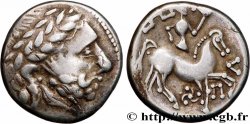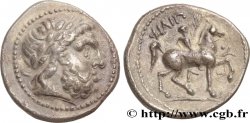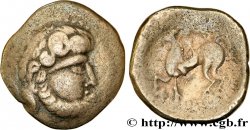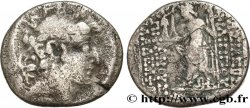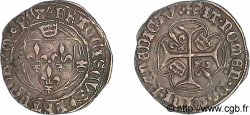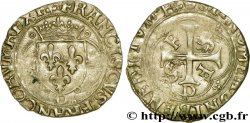v43_1195 - DONAURAUM Tétradrachme au cavalier sans bras
MONNAIES 43 (2010)
Startpreis : 380.00 €
Schätzung : 600.00 €
Erzielter Preis : 473.00 €
Anzahl der Gebote : 4
Höchstgebot : 473.00 €
Startpreis : 380.00 €
Schätzung : 600.00 €
Erzielter Preis : 473.00 €
Anzahl der Gebote : 4
Höchstgebot : 473.00 €
Type : Tétradrachme au cavalier sans bras
Datum: (IIe-Ier siècles avant J.-C.)
Metall : Silber
Durchmesser : 22 mm
Stempelstellung : 8 h.
Gewicht : 13,32 g.
Seltenheitsgrad : R2
Kommentare zum Erhaltungszustand:
Très bel exemplaire, frappé sur un flan un peu court et épais. Frappe centrée et vigoureuse, avec un beau brillant de frappe des deux côtés et une fine patine irisée
N° im Nachschlagewerk :
Pedigree :
Cet exemplaire a été acheté 525$ chez Freeman & Sear
Vorderseite
Titulatur der Vorderseite ANÉPIGRAPHE.
Beschreibung Vorderseite Tête laurée de Zeus à droite ; grènetis.
Rückseite
Titulatur der Rückseite ANÉPIGRAPHE.
Beschreibung Rückseite Cavalier au pas à droite ; le cheval lève l'antérieur gauche ; aucun ornement entre les jambes du cheval.
Kommentare
Si le statère d’or de Philippe II de Macédoine a servi de prototype à de nombreuses imitations gauloises, le tétradrachme n’a pas été imité en Gaule, mais reste principal sujet d’inspiration des monnaies pour les Celtes du Danube (LT. 9697-9767, 9768-9832, 9618-9630, 9870-9886). Les premières imitations furent frappées dans le premier quart du IIIe siècle avant J.-C. La fabrication des copies serviles, puis des imitations, enfin des frappes celtiques continuèrent pendant plus de deux siècles.
While the gold stater of Philip II of Macedon served as a prototype for many Gallic imitations, the tetradrachm was not imitated in Gaul, but remained the main source of inspiration for coins for the Danube Celts (LT. 9697-9767, 9768-9832, 9618-9630, 9870-9886). The first imitations were struck in the first quarter of the 3rd century BC. The manufacture of servile copies, then imitations, and finally Celtic strikes continued for more than two centuries.
While the gold stater of Philip II of Macedon served as a prototype for many Gallic imitations, the tetradrachm was not imitated in Gaul, but remained the main source of inspiration for coins for the Danube Celts (LT. 9697-9767, 9768-9832, 9618-9630, 9870-9886). The first imitations were struck in the first quarter of the 3rd century BC. The manufacture of servile copies, then imitations, and finally Celtic strikes continued for more than two centuries.








 Berichten über einen Fehler
Berichten über einen Fehler Die Seite drucken
Die Seite drucken Teilen meiner Auswahl
Teilen meiner Auswahl Stellen Sie eine Frage
Stellen Sie eine Frage Einlieferung/Verkauf
Einlieferung/Verkauf
 Details
Details